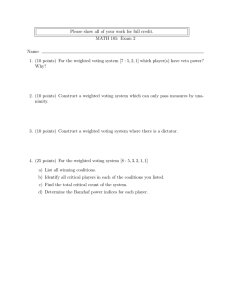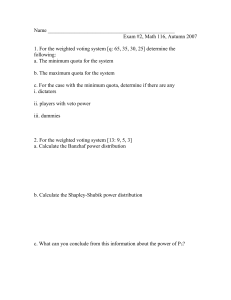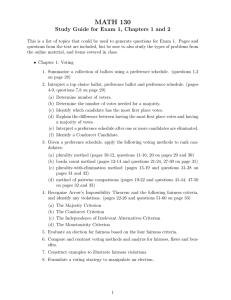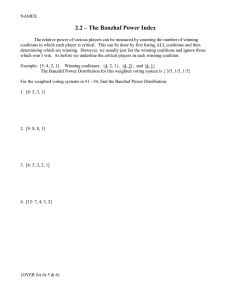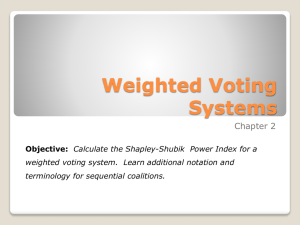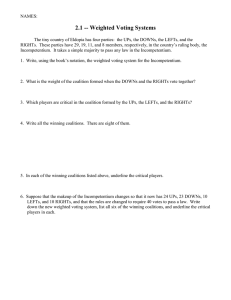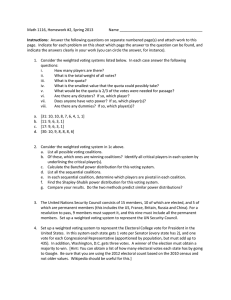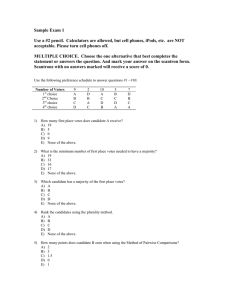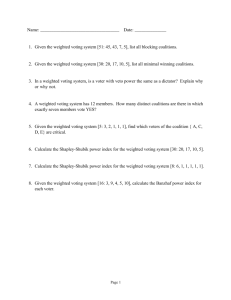Shapley-Shubik vs. Banzhaf Power Distributions
advertisement
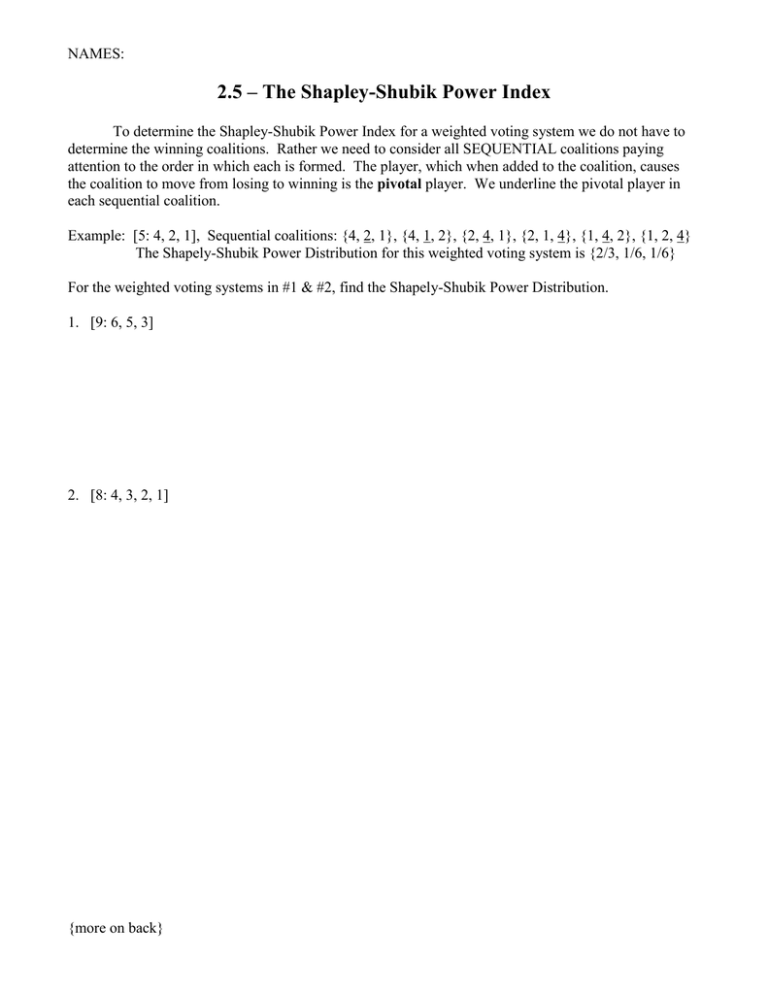
NAMES:
2.5 – The Shapley-Shubik Power Index
To determine the Shapley-Shubik Power Index for a weighted voting system we do not have to
determine the winning coalitions. Rather we need to consider all SEQUENTIAL coalitions paying
attention to the order in which each is formed. The player, which when added to the coalition, causes
the coalition to move from losing to winning is the pivotal player. We underline the pivotal player in
each sequential coalition.
Example: [5: 4, 2, 1], Sequential coalitions: {4, 2, 1}, {4, 1, 2}, {2, 4, 1}, {2, 1, 4}, {1, 4, 2}, {1, 2, 4}
The Shapely-Shubik Power Distribution for this weighted voting system is {2/3, 1/6, 1/6}
For the weighted voting systems in #1 & #2, find the Shapely-Shubik Power Distribution.
1. [9: 6, 5, 3]
2. [8: 4, 3, 2, 1]
{more on back}
3. In each of the weighted voting systems above (#s 1 & 2) show that the Banzhaf Power Distribution
is different from the Shapely-Shubik Power Distribution.
